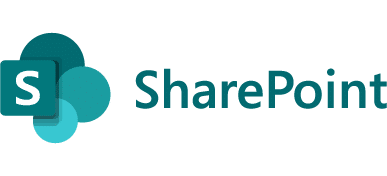SharePoint Improves Productivity for Professional Services Firms
SharePoint enables professional services firms to capitalize on knowledge by transforming it into digital tools people can actually use.
SharePoint enables professional services firms to capitalize on knowledge by transforming it into digital tools people can actually use.
Table of Content
SharePoint enables firms to make the most of their existing expertise, data, and perspectives by transforming them into digital tools people can actually use. Think – self-serve portals, org-wide intranets, or private websites where analysts can share insights with clients in a secure environment.
On the client side, the platform helps firms engage customers in new ways, while internally, SharePoint solutions can help employees deliver high-quality experiences, get more done, and effectively use data to create a competitive advantage.
Given that no other industry relies on information like professional services, SharePoint could be a critical investment for firms – promising big-time returns on multiple fronts.
Below, we’ll take a closer look at some of the ways professional services organizations can benefit from bringing SharePoint into the stack.

Microsoft describes SharePoint as a cloud-based information management service that allows organizations to create secure websites, as well as store, access, and share information. And, while that’s technically accurate, SharePoint is so much more than that — particularly for professional services firms that deal primarily in knowledge and expertise.
That said, SharePoint can be hard to describe for a couple of reasons. For one, it functions as a content management system, a repository for storing files and information, and even an intranet you can use to support your employees, partners, and clients. You can also use it to build websites, landing pages, and portals.
Second, SharePoint overlaps with a handful of other Microsoft products including OneDrive (for storing and the Power Platform (for building sites, self-service portals, and pages). There are some important differences between these solutions, but it can be hard to distinguish between them if you don’t know all the nuances of the Microsoft ecosystem.
With that in mind, here’s a quick rundown of some common use cases for this versatile platform:
Create a unified hub. SharePoint brings all relevant data together in one centralized location. This, in turn, helps firms streamline workflows and processes, ID trends, surface patterns, and make decisions that improve all-around performance.
While these benefits sound just like the ones you’ll find in a cloud-based ERP solution like Dynamics 365, SharePoint approaches unity in a slightly different way. SharePoint integrates with your ERP – allowing you to create separate “hubs” from the same data connected to the core system.
For example, you can build custom SharePoint sites and use them to publish content online (like any public-facing website) or store and collaborate on files. You can also use SharePoint sites to build personalized solutions for clients, self-service portals for vendors and partners, or subscription-based services that unlock new revenue streams. You might even use them as a way to securely share reports or presentations containing sensitive data.
The Teams and SharePoint integration allows firms to create separate communication channels for different portals and sites, while at the same time, ensuring that users can easily access data stored anywhere on the network.
Additionally, professional services firms can use SharePoint to separate different portfolio brands, projects, or teams, without losing access to real-time, accurate insights that span the entire organization.
Establish your own intranet. Firms can use SharePoint to create a “modern intranet” in the cloud where users can share and manage knowledge, content, and applications, as well as collaborate within a protected digital environment. This adds a layer of security to remote work and projects requiring external collaboration – and makes it easy for users to access the insights and tools they need to do their jobs.
It also allows IT pros and business leaders to monitor usage, activity, and track performance against a variety of metrics.
Note that this shouldn’t be about watching employees work. It’s more about creating a digital workspace that you can control and optimize. So, IT might use it to proactively identify (and fix) emerging cyber threats. Team leaders can see how employees use internal resources, measure their efficacy against “hard” metrics tied to the bottom line, and from there, look for ways to get closer to the desired outcome.
SharePoint is an under-rated powerhouse when it comes to driving business performance.
It serves as a central information hub loaded with features that make it easier to locate files, communications records, and critical insights, manage access permissions, and stay in control of valuable IP, data, and digital assets.
Professional services firms can also create unique channels for sharing information internally and with clients. They can quickly put together websites and automate time-consuming, manual tasks – and leverage powerful integrations with Teams and the Power Platform to take those capabilities even further.
Velosio’s professional service solutions build on the existing capabilities of D365, SharePoint, Microsoft 365, Azure, and the rest of the stack – to help firms better manage complex projects, deliver more value to clients, and make smarter, more profitable decisions. Get in touch with an expert to find out more.